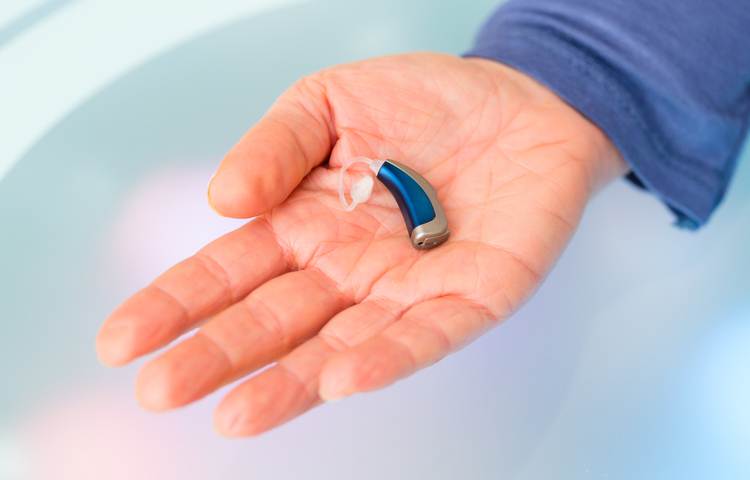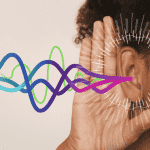Cleaning and maintenance of your hearing aids is a critical routine a hearing aid user should apply on a daily or weekly basis. Information about cleaning and maintaining your hearing devices should have been provided by your hearing healthcare provider, whether it is your audiologist or hearing aid specialist.
After the hearing aid fitting and follow up appointments, it may be difficult to remember how to clean your hearing aids at home correctly. Before contacting your hearing healthcare provider, you can try to clean your hearing aids in the comfort of your own home with the help of these few cleaning tips. Here are five best ways to clean your hearing aids and to keep them clean.
Wiping of hearing aids
Hearing aids regularly collect earwax, moisture, oil, and debris daily. Hearing aids are located on or in the ear, coming into contact with skin and hair. Hearing aids are also in contact with debris and dust from the air.
The best way to wipe off the earwax, debris, oil, and moisture from the body and receiver or earmold of the hearing aid is to wipe them with a dry, clean tissue or cloth. It is not recommended to apply water, alcohol, or other cleaning solutions to the hearing aid as it could cause some damage to the devices.
Brushing of hearing aids
Sometimes, hearing aids need a little more than just wiping it down. Some debris may be difficult to remove from the microphone or around the crevices of the push buttons or volume wheel.
Sometimes, earwax may be trapped around the device, the earmold, or the receiver dome tips, making it hard to remove with just a dry cleaning cloth.
Your hearing aid kit should come with a hearing aid cleaning brush. Utilize the brush to gently remove any ear wax or debris from the body and the receiver or earmold of the hearing aid. If your hearing aid kit does not include a brush, your hearing healthcare provider can give some upon request.
If you’re in a bind and you’re unable to reach your healthcare provider for a hearing aid cleaning brush, another tool you can use is a clean, soft bristle toothbrush. A toothbrush can be used to gently remove wax and debris from the hearing aids.
Changing of hearing aid wax filter
Receiver-In-The-Ear (RITE) or Receiver-In the-Canal (RIC) hearing aids with standard or custom/embedded receivers as well as custom made in-the-ear type hearing aids typically come with wax filter protection.
The wax filter, located in the receiver or speaker, is used to prevent and to keep wax, moisture, or other debris from further entering the receiver or speaker portion of the hearing aid. Sometimes, the wax filter will have to be replaced on an as-needed basis.
There are signs for when it is time to replace the filter. If the hearing aid amplification sounds weak, or there is no amplification coming from the hearing aid, check the wax filter. If you’re unsure or cannot tell if the filter is clogged, go ahead and replace the filter with a new one.
There are instructions in your hearing aid kit that shows you step by step on how to replace your hearing aid filter.
Utilize the hearing aid drying kit
Hearing aids are made of materials to help protect against debris and moisture build-up. Of course, with the cleaning and maintenance of the hearing aids, you may help extend the lifespan of your devices.
Hearing aids that have been exposed to sweat, humidity, or moist conditions would benefit from the use of a hearing aid dryer. Hearing aid dryers can help remove any excess moisture that may be trapped into the hearing aids.
There are different kinds of drying kits available. It is recommended to discuss with your hearing healthcare provider, which drying kits are best for your hearing devices.
Overall maintenance of hearing aids
It is highly recommended to clean and keep your hearing aids clean daily to optimize the performance and use of your devices.
Consider cleaning your hearing aids nightly or first thing in the morning, if possible. If daily wiping of the hearing aids is still too tedious, consider cleaning your hearing aids weekly.
Another way to remember when to clean your hearing aids often is when it is time to change your hearing aid batteries. For example, brush off your hearing aids with a cleaning brush, then wipe down your hearing aid with a dry cleaning cloth before inserting a new battery.
Overall, keeping your hearing aids clean could help expand the life of your hearing aids. Clean hearing aids equals better hearing aid performance. If hearing aids are not carefully maintained, it could affect the overall speech clarity and sound quality.
It is highly recommended to clean your hearing devices daily so that you can get the best use out of your hearing devices for long periods of time.




